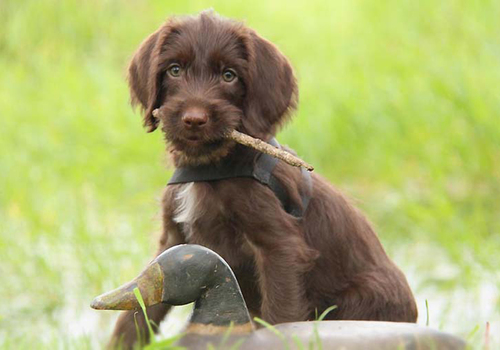The Pudelpointer is a rough-coated pointing dog that originates from two breeds, thePoodleand thePointer. The idea behind the breed was to create a dog that combined the Poodle’s intelligence, love of water, retrieving instincts, easy trainability, willingness to please, and protective coat with the Pointer’sendless desire to hunt, birdiness, pointing instincts, field nose and endurance.
The first cross of a Poodle and an English Pointer to establish the new breed took place in Germany in 1881. The sire was an English Pointer owned by Kaiser Frederick III named Tell and the dam, a Poodle named Molly, belonged toa famous Teutonic author on the subject of hunting dogs, Hegewald.
The Poodle’s genes, as a breed, seemed to have been more dominant in passing on. To alter this, many more Pointers than Poodles were introduced into the breeding program to arrive at what the Pudelpointer is today. During the first 30 years of breeding, only 11 Poodles were used as opposed to well over 80 Pointers. After that initial time period, only the occasional reintroduction of the Pointer was needed.After World Wars I and II, the breed became severely depleted and the reintroduction of the Pointer became important again to rebuild the breeding stock.
The first Pudelpointers in North America were imported in 1956. After the breed’s foundation was laid, the Pudelpointer Club of North America was founded in 1977 in Canada.












